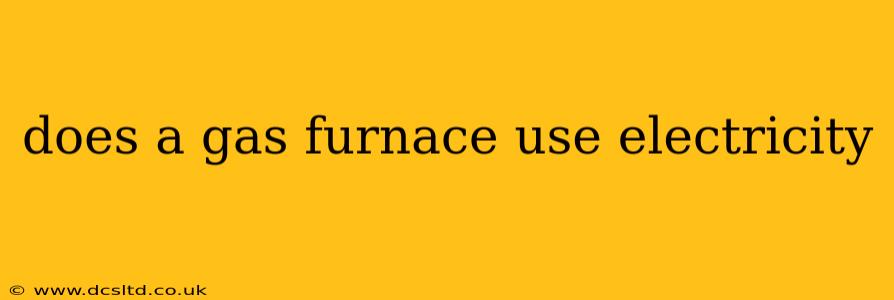While a gas furnace primarily uses natural gas to generate heat, it's a common misconception that it doesn't require any electricity. The truth is, yes, a gas furnace does use electricity, although the amount is significantly less than electric furnaces. Electricity is essential for several crucial functions that enable the furnace to operate safely and efficiently. Let's delve into the details.
What Electrical Components Does a Gas Furnace Use?
Several electrical components are vital to the operation of a gas furnace. These include:
-
Ignition System: Modern gas furnaces utilize an electronic ignition system, replacing older pilot lights. This system uses electricity to create a spark, igniting the gas burner. This is a crucial function, as it ensures safe and reliable ignition without the constant burning of a pilot light.
-
Blower Motor: The blower motor, responsible for circulating heated air throughout your home, is electrically powered. This is a significant electricity consumer compared to other components. The size and efficiency of the motor will impact electricity usage.
-
Gas Valve: While the gas itself is not electrically powered, the gas valve that controls the flow of gas to the burner is electrically operated. It opens and closes based on signals from the furnace's control board.
-
Control Board: The control board is the brain of the operation. It monitors various sensors, manages the ignition sequence, controls the blower motor, and regulates the gas valve. This sophisticated electronic system requires electricity.
-
Sensors and Safety Devices: Various sensors monitor factors like flame detection, temperature, and pressure. These sensors, as well as safety devices like limit switches, are all electrically powered and play a crucial role in safe furnace operation.
-
Circulator Pump (for some models): Some high-efficiency gas furnaces also incorporate a circulator pump for the hot water heating system. This pump, required to circulate heated water throughout the house, is electrically powered.
How Much Electricity Does a Gas Furnace Use?
The amount of electricity a gas furnace consumes varies depending on several factors, including:
-
Furnace Size and Efficiency: Larger furnaces generally consume more electricity. Higher efficiency furnaces, however, are designed to use less electricity while achieving the same heating output. Look for the Annual Fuel Utilization Efficiency (AFUE) rating; higher numbers (typically 90-98%) indicate greater efficiency.
-
Blower Motor Type: The type of blower motor (permanent split capacitor vs. ECM) significantly impacts electricity consumption. ECM motors are more efficient, reducing overall electricity usage.
-
Frequency of Operation: A furnace operating in a colder climate or a poorly insulated home will use more electricity as the blower runs more frequently.
-
Age of the Furnace: Older furnaces are typically less efficient and may consume more electricity than newer models.
It's difficult to give a precise figure for electricity consumption. However, a typical gas furnace might consume between 200 and 500 watts during operation. This is far less than an electric furnace, which consumes significantly more electricity to generate the same amount of heat.
What About the Pilot Light?
Older gas furnaces used a continuously burning pilot light, which did consume a small amount of gas. Modern furnaces utilize electronic ignition, eliminating the need for a pilot light and saving both gas and energy.
Can a Gas Furnace Run Without Electricity?
No, a modern gas furnace cannot run without electricity. The electronic ignition, blower motor, control board, and other electrical components are essential for its operation.
Is It Expensive to Run a Gas Furnace?
The running cost of a gas furnace depends on electricity and gas prices, the furnace's efficiency, and usage patterns. While electricity usage is relatively low compared to electric furnaces, gas remains the primary energy source, contributing to the majority of your heating bill. However, when compared to all-electric heating, gas remains a far more cost-effective option in many areas.
By understanding how electricity plays a vital role in gas furnace operation and considering factors that influence energy consumption, you can make informed decisions about maintaining and upgrading your heating system.
